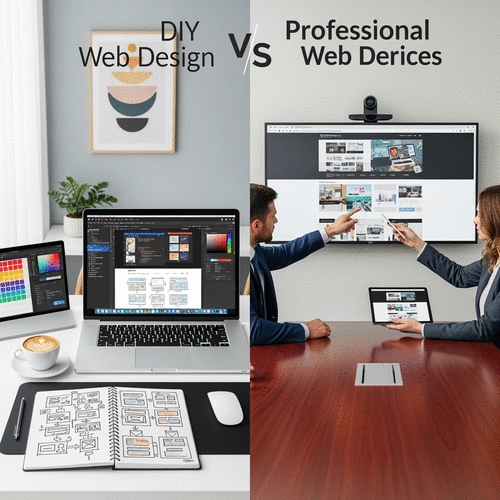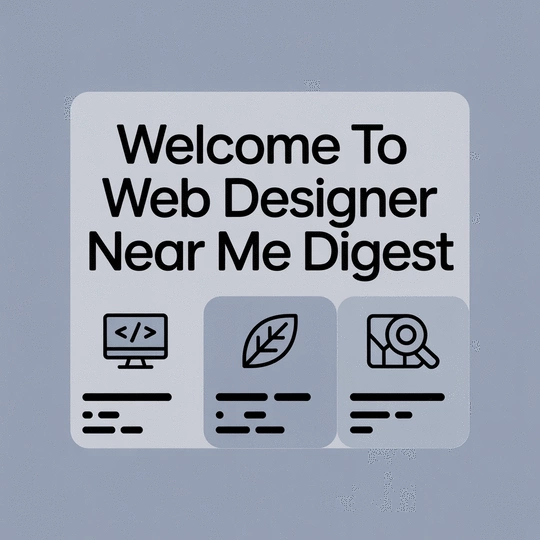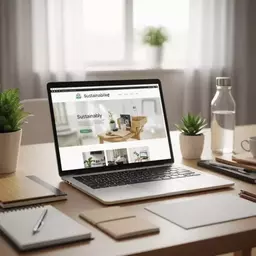As you navigate the intricate world of web design, understanding your options can significantly impact your online presence. Are you ready to make a choice that reflects your brand's identity and goals? Let's explore the key insights that will guide you in this journey.
What You Will Learn
- DIY web design requires self-learning, patience, and the right tools for success.
- Common pitfalls in DIY projects include neglecting mobile responsiveness and SEO practices.
- Professional designers offer expertise in user experience, ensuring your site is both functional and appealing.
- Choosing the right platform—like WordPress, Squarespace, or Wix—depends on your technical skills and project needs.
- Weighing the complexity of your website against your budget and long-term goals is crucial.
DIY vs. Professional Web Design: A Comparative Overview
This comparison highlights the key differences and considerations when choosing between DIY web design platforms and hiring professional services. For those exploring their options, understanding the nuances can greatly simplify the decision-making process, whether you're considering local affordable web design options or a more hands-on approach.
DIY Web Design
Ideal for those with tight budgets or a desire to learn, but requires significant time investment and self-learning.
- Time: High (Learning Curve)
- Cost: Low (Platform fees + self-hosting)
- Flexibility: Moderate (Platform-dependent)
- Expertise: Self-taught, trial & error
Common Platforms
- WordPress (Scalable, Complex)
- Squarespace (Easy, Limited)
- Wix (Easy, Drag-and-drop)
Key DIY Mistakes
- Neglecting mobile responsiveness
- Ignoring SEO best practices
- Overlooking user experience (UX)
Professional Web Design
Offers expert knowledge, long-term support, and custom branding, leading to a high-performing and scalable website.
- Time: Low (Outsourced)
- Cost: High (Investment)
- Flexibility: High (Custom solutions)
- Expertise: Professional UX/SEO, branding
Understanding the Landscape of Web Design: DIY vs. Professional Services
When embarking on a web design journey, understanding the differences between DIY web design and hiring a professional can make all the difference. Many individuals and businesses often find themselves at a crossroads, unsure whether to roll up their sleeves and tackle the design themselves or seek expert assistance. In this section, we'll explore both avenues, helping you determine which path aligns with your goals and resources.
Let's dive into what DIY web design entails and the important factors to consider when making your choice!
What Does DIY Web Design Involve?
DIY web design involves creating your website using various tools and platforms without hiring a professional designer. This approach can be appealing for those with a tight budget or who enjoy the creative process. However, it does require a significant time investment and a willingness to learn new skills.
- Self-learning and Skill Development: You will need to familiarize yourself with design principles, user experience (UX), and possibly some coding.
- Trial and Error: Expect to make mistakes along the way, which can be both a learning opportunity and a source of frustration.
- Choosing the Right Tools: Selecting the appropriate platform that suits your needs is essential for a successful DIY project.
By understanding these elements, you can better prepare for the challenges of DIY web design and set realistic expectations.

Tools and Platforms Used for DIY
There are numerous platforms available for DIY web design, each offering unique features and functionalities. Your choice may depend on your technical skills and specific needs. Some popular options include:
- WordPress: Ideal for scalability and customization, but it may require some technical knowledge to fully utilize its capabilities.
- Squarespace: Known for its sleek templates and user-friendly interface, making it perfect for beginners.
- Wix: Offers a drag-and-drop feature, making it accessible for those with minimal design experience.
Choosing the right platform is crucial for a smooth design process. Each has its pros and cons, so consider your unique needs before making a decision!
Common Mistakes to Avoid in DIY Web Design
While DIY web design can be rewarding, several common pitfalls can hinder your efforts. Some mistakes to watch out for include:
- Neglecting Mobile Responsiveness: Ensure your site looks good on all devices; a poor mobile experience can deter potential visitors. For more tips, check out our guide on mobile-first design tips for Australia.
- Ignoring SEO Best Practices: A beautiful website is useless if no one can find it. Invest time in learning basic SEO principles.
- Overlooking User Experience: A cluttered or confusing layout can frustrate users, leading to higher bounce rates.
Avoiding these common mistakes can drastically improve your chances of creating a successful DIY website that caters to your audience's needs.
Key Features of Popular DIY Platforms: WordPress, Squarespace, and Wix
Each DIY platform comes with its key features that can significantly impact your design process. Here’s a brief comparison:
| Platform | Ease of Use | Customization Options | Cost |
|---|---|---|---|
| WordPress | Moderate to complex | Highly customizable with themes and plugins | Varies (hosting fees apply) |
| Squarespace | Very easy | Limited customization, but beautiful templates | Subscription-based |
| Wix | Very easy | Moderate customization with drag-and-drop | Subscription-based |
Considering these features can help you make an informed choice about which platform suits your web design needs best! Each option offers unique benefits, so align your choice with your overall website goals.
The Advantages of Hiring a Professional Web Designer
While DIY web design has its appeal, hiring a professional designer comes with its own set of advantages that can greatly enhance your website's effectiveness. By leaving the design to the experts, you can focus on what you do best—running your business!
- Expertise in User Experience (UX) and SEO: Professionals bring knowledge of best practices, ensuring a user-friendly experience and better search engine visibility.
- Long-term Support and Website Maintenance Benefits: A professional can manage updates, security, and performance, allowing you to focus on your core business.
- Branding and Customization Options: Professionals can create a unique design that aligns perfectly with your brand identity.
- Understanding the Role of Web Design Agencies and Freelance Designers: Knowing which type of designer to hire can make a significant difference in project outcomes.
Ultimately, investing in a professional web designer can save you time and money in the long run, leading to a website that not only looks great but performs well too!
We Want to Hear From You!
What do you think about choosing between DIY web design and hiring a professional? Share your thoughts below:
Frequently Asked Questions (FAQs)
What are the main differences between DIY and professional web design?
DIY web design involves creating your website using platforms like WordPress, Squarespace, or Wix, requiring a significant time investment and self-learning. Professional web design involves hiring experts who provide specialized knowledge in UX, SEO, branding, and long-term support, leading to a high-performing and scalable website.
What are common platforms for DIY web design?
Popular platforms for DIY web design include WordPress for scalability and customization, Squarespace for sleek templates and ease of use, and Wix for its drag-and-drop interface and accessibility.
What common mistakes should be avoided in DIY web design?
Common mistakes include neglecting mobile responsiveness, ignoring SEO best practices, and overlooking user experience (UX). Addressing these can significantly improve your website's success.
What are the key advantages of hiring a professional web designer?
Professionals offer expertise in UX and SEO, provide long-term support and maintenance, ensure custom branding, and can deliver a high-performing, scalable website that aligns with your business goals.
How can I make an informed decision between DIY and professional web design?
Assess your needs, budget, and skill level. Define your website's primary purpose and non-negotiable features. Prioritize quality and long-term success, considering whether DIY or professional services will best meet your objectives and contribute to your brand's growth.
Summary of Key Takeaways on DIY vs. Professional Web Design
When considering whether to tackle your website as a DIY project or hire a professional, it's essential to weigh your options carefully. Both approaches have their merits, but understanding your unique needs will guide you to the right choice. Let’s recap some key takeaways.
- Assess your skill level and available time for DIY efforts.
- Consider the complexity of your website and its long-term goals.
- Evaluate your budget while factoring in hidden costs of DIY options.
By reflecting on these points, you'll be better prepared to make an informed decision that aligns with your vision for your online presence.
Making an Informed Decision: DIY or Professional?
First and foremost, it’s critical to assess your needs and budget. Are you looking for a simple portfolio to showcase your work, or do you need an e-commerce platform with complex functionalities? By clearly defining your objectives, you can streamline your decision-making process.
- Identify the primary purpose of your website.
- List features that are non-negotiable for your goals.
- Set a realistic budget that encompasses both initial and ongoing costs.
Next, prioritizing quality and long-term success is vital. While DIY may seem cost-effective initially, consider whether it will deliver the professional look and functionality required to engage your audience. Remember, a well-designed site can significantly impact your credibility and user retention!

Understanding the Importance of Website Development in Your Decision
As a web design professional, I can’t stress enough how crucial website development is in this equation. Your website is often the first point of contact for potential clients, and a polished, functional site can set you apart from the competition. Investing in professional web design can yield dividends in the long run, especially in terms of user experience and search engine optimization.
For many businesses, a professional design not only ensures a visually appealing site but also streamlines the development process, allowing for future scalability and maintenance. Ultimately, it’s about making a choice that reflects your commitment to your brand and future growth. When you're ready to find the right talent, consider connecting with local web designers who understand your market.
Next Steps: Actionable Advice for Your Web Design Journey
Now that you have a clearer idea of which direction to take, let’s focus on actionable next steps for your web design journey. Here's a simple checklist to help you get started:
- Create a detailed list of your website requirements.
- Research and compile a list of local web designers or agencies to consider.
- Evaluate different content management systems (CMS) that fit your needs.
Taking these steps will empower you to make the most informed decision possible, ultimately enhancing your online presence!
Resources for Finding Local Web Design Professionals
To find the right local web design professionals, start by exploring online directories, local business reviews, and even social media platforms. You can also reach out to your network for recommendations. There’s nothing quite like a personal referral to build trust!
As you dive deeper into this process, remember that I, Clara Jennings from Web Designer Near Me Digest, am here to provide guidance and support. My goal is to help you navigate the world of web design with ease and confidence!
Exploring Content Management Systems (CMS) for Future Projects
Lastly, familiarize yourself with popular content management systems like WordPress, Squarespace, and Wix. Each platform offers unique features that cater to different needs, so take the time to explore what each has to offer. Choosing the right CMS can make a world of difference in how you manage your website in the future. Happy designing!
Recap of Key Points
Here is a quick recap of the important points discussed in the article:
- Assess your skill level and available time for DIY efforts.
- Consider the complexity of your website and its long-term goals.
- Evaluate your budget while factoring in hidden costs of DIY options.
- Choose the right platform based on your technical skills and website needs.
- Avoid common mistakes such as neglecting mobile responsiveness and ignoring SEO best practices.
- Understand the advantages of hiring a professional designer, including expertise in user experience and SEO.
- Make a detailed list of your website requirements before starting your design journey.








